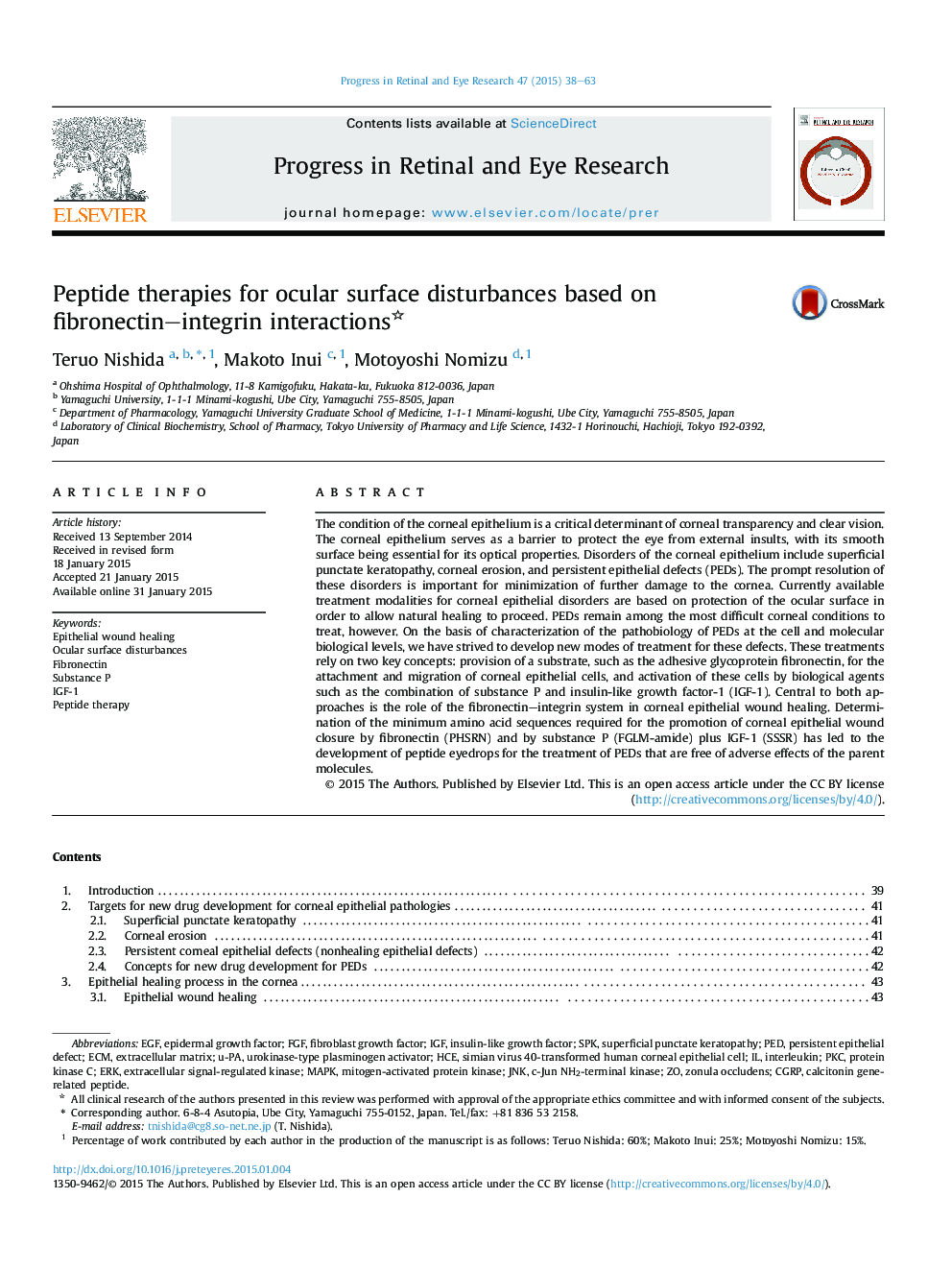| Article ID | Journal | Published Year | Pages | File Type |
|---|---|---|---|---|
| 6202704 | Progress in Retinal and Eye Research | 2015 | 26 Pages |
The condition of the corneal epithelium is a critical determinant of corneal transparency and clear vision. The corneal epithelium serves as a barrier to protect the eye from external insults, with its smooth surface being essential for its optical properties. Disorders of the corneal epithelium include superficial punctate keratopathy, corneal erosion, and persistent epithelial defects (PEDs). The prompt resolution of these disorders is important for minimization of further damage to the cornea. Currently available treatment modalities for corneal epithelial disorders are based on protection of the ocular surface in order to allow natural healing to proceed. PEDs remain among the most difficult corneal conditions to treat, however. On the basis of characterization of the pathobiology of PEDs at the cell and molecular biological levels, we have strived to develop new modes of treatment for these defects. These treatments rely on two key concepts: provision of a substrate, such as the adhesive glycoprotein fibronectin, for the attachment and migration of corneal epithelial cells, and activation of these cells by biological agents such as the combination of substance P and insulin-like growth factor-1 (IGF-1). Central to both approaches is the role of the fibronectin-integrin system in corneal epithelial wound healing. Determination of the minimum amino acid sequences required for the promotion of corneal epithelial wound closure by fibronectin (PHSRN) and by substance P (FGLM-amide) plus IGF-1 (SSSR) has led to the development of peptide eyedrops for the treatment of PEDs that are free of adverse effects of the parent molecules.
